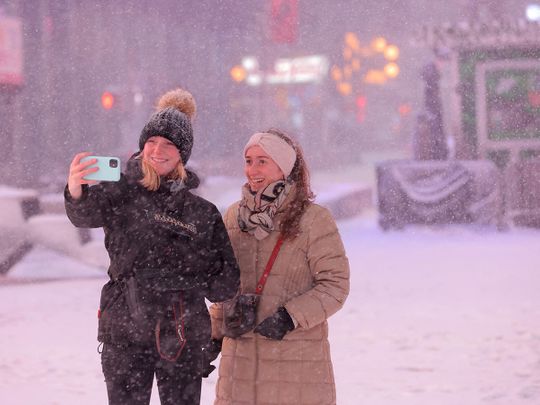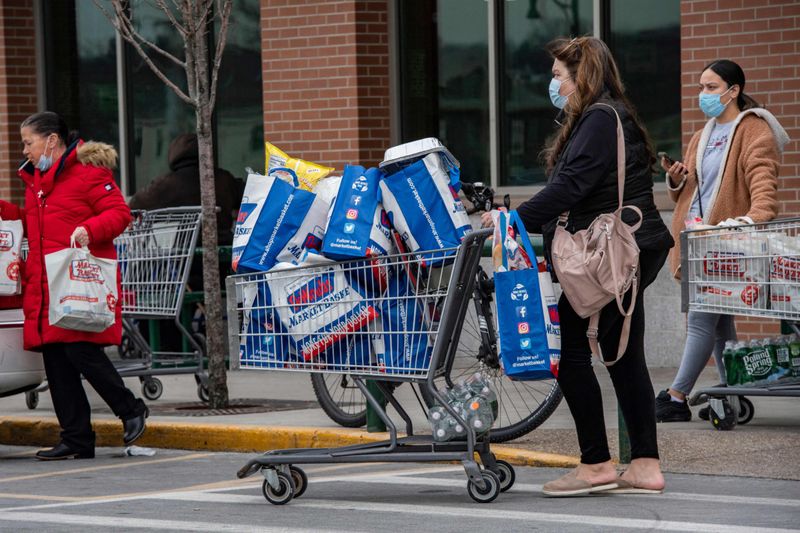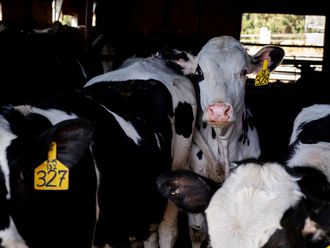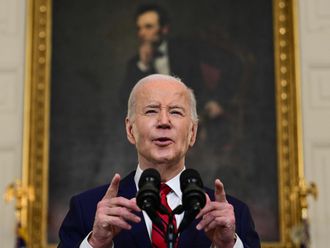
New York: People from New York City to Maine awakened on Saturday to half a foot (15 centimeters) of snow, and forecasters warned that could more than quadruple as a powerful nor’easter (wind blowing from the north-east) kicked up blinding blizzard conditions with high winds and the potential for widespread power outages and coastal flooding.
Parts of 10 states and some major population centers — Philadelphia, New York and Boston — were in the path of the storm, which was expected to rage throughout the day.
The storm threatened blizzard conditions, high winds and coastal flooding in some areas, along with punishing cold behind it that could leave many people shivering amid power outages.
Airlines cancelled more than 4,500 flights at some of the nation’s busiest airports, according to FlightAware. Amtrak suspended or limited service on the Boston-to-Washington corridor.
In West Hartford, Connecticut, a tractor-trailer jacknifed on snow-slicked Interstate 84, closing several westbound lanes.
Officials from Virginia to Maine warned people to stay off the roads amid potential whiteout conditions. The storm’s saving grace: It was hitting on a weekend, with schools closed and few commuters.
Rhode Island, all of which was under a blizzard warning, banned all nonemergency road travel starting at 8am.
“This is serious. We’re ready for this storm, and we also need Rhode Islanders to be ready,’’ Governor Dan McKee said. “The best way to handle this storm is to stay home tomorrow.’’
Delaware allowed only essential personnel to drive in two of its three counties. Massachusetts, where forecasters said some isolated pockets could get as much as 30 inches (76 centimeters) of snow, banned heavy trucks from interstate highways for most of Saturday.

Parts of 10 states were under blizzard warnings: Maine, New Hampshire, Massachusetts, Rhode Island, Connecticut, New York, New Jersey, Delaware, Maryland and Virginia. Areas closest to the coast were expected to bear the brunt of the storm, which could bring wind gusts as high as 70 mph (113 kph) in New England.
Coastal New Jersey was forecast to get as much as 18 inches (46 centimeters) of snow and eastern Long Island up to 17 inches (43 centimeters). Philadelphia, New York City, and parts of the Delmarva Peninsula in Delaware, Maryland and Virginia could get 10 inches (25 centimeters) or more.
Salt machines and snowplows were at the ready in New York, where Mayor Eric Adams tweeted that a foot (30 centimeters) of snow was predicted, but warned that “Mother Nature has a tendency to do what she wants.”
The National Weather Service warned of “whiteout conditions and nearly impossible travel at times,” along portions of the Mid-Atlantic and New England coasts, with snowfall accumulations greater than a foot expected in parts of the same region.
The governors of New York and New Jersey declared a state of emergency while Boston Mayor Michelle Wu declared a snow emergency.
The storm will produce extremely cold temperatures with dangerous wind chills on Saturday night into Sunday morning, the NWS said.
“Get home safely tonight, remain home over the weekend, avoid any unnecessary travel,” New York Governor Kathy Hochul said in a statement, singling out Long Island, New York City and the lower Hudson Valley for particularly deep snow.
The National Weather Service Eastern Region reported that the storm was expected to intensify rapidly over the next 24 hours, with pressure expected to fall around 35 millibars by Saturday evening. This rapid intensification is sometimes referred to as a “bomb cyclone.”
The storm threatened blizzard conditions, high winds and coastal flooding in some areas, along with punishing cold behind it that could leave many people shivering amid power outages.
Merrick McCormack was among hundreds who packed a Shaw’s Supermarket in Warwick, Rhode Island, with the entire state under a blizzard warning and officials mobilizing more than 500 snowplows.
“I don’t fuss with storms. I know in a couple of days, we’re going to be free and clear. No need to panic,’’ the 51-year-old Cranston resident said, flashing some New England stoicism as he unloaded his groceries.

Regional supermarket giant Stop & Shop pleaded with customers to practice restraint, warning that staffing and supply woes caused by the coronavirus pandemic will mean barer shelves and longer checkout lines.
“We ask shoppers to buy what they need and save some for their neighbours,’’ the grocery chain said in a statement.
Snow began falling Friday evening in parts of Appalachia and was expected to start later in the Carolinas.
The system was expected to intensify as a nor’easter and bring the snow Saturday up into New England, where forecasters warned of up to 20 inches (51 centimeters) and wind gusts as high as 60 mph (96 kph). Some isolated spots could see nearly 3 feet (1 meter) of snow.
Officials warned of whiteout conditions. The common refrain from New York Gov. Kathy Hochul and other state executives: “Just stay off the roads.”
In Maryland, Governor Larry Hogan mobilised the state National Guard, with parts of the state’s Eastern Shore expecting up to a foot of snow. Washington could see 1 to 3 inches.
In Virginia, where a blizzard this month stranded hundreds of motorists for hours on Interstate 95, Governor Glenn Youngkin said officials had already begun positioning resources in anticipation of toppled trees, power outages and possible tidal flooding.
Similar weather was expected up to the Philadelphia and New York City areas. Seaside communities from the Jersey Shore to suburban Long Island and southeastern Connecticut could see higher snowfall rates and stronger winds than the big cities.
About 1,800 snowplows were ready for deployment in New York City, and workers were already spreading salt on hundreds of miles of streets ahead of the storm, Sanitation Commissioner Edward Grayson said.
Some New England officials fretted about a shortage of snowplow drivers.
Connecticut Transportation Commissioner Joseph Giulietti said Friday his staffing is down about 30% this weekend because of COVID-19 and other issues.
The state expects to have more than 600 plow and sanding trucks out along with additional contractors, but with anticipated snowfall rates of 5 inches an hour, it might not be enough, he said.
“It depends on the length of the storm,’’ Giulietti said. “Because these people have to keep circling and going back out on the routes.”
Across the Northeast, the shelf-clearing rush for bread, eggs, milk and other staples was well underway Friday at grocery stores.
At the Star Market in Cambridge, Marc Rudkowski was among those practically giddy at the prospect of a weekend snowed in. The 28-year-old machine learning engineer stocked up on French bread and wine, as well as balloons and toys for his puppy, who turned 1 on Friday.
“He’s going to love it. He’s a snow dog,’’ Rudkowski said.
In Maine, where a blizzard warning was issued, Rick Tucker kept busy as customers bought generators, snowblowers, shovels, ice melt, lanterns and other essentials Friday at Maine Hardware in Portland.
“It sounds like it’s going to be a big one,’’ the store president said. “We haven’t had one of those for a while. It’s going to be fun.’’












